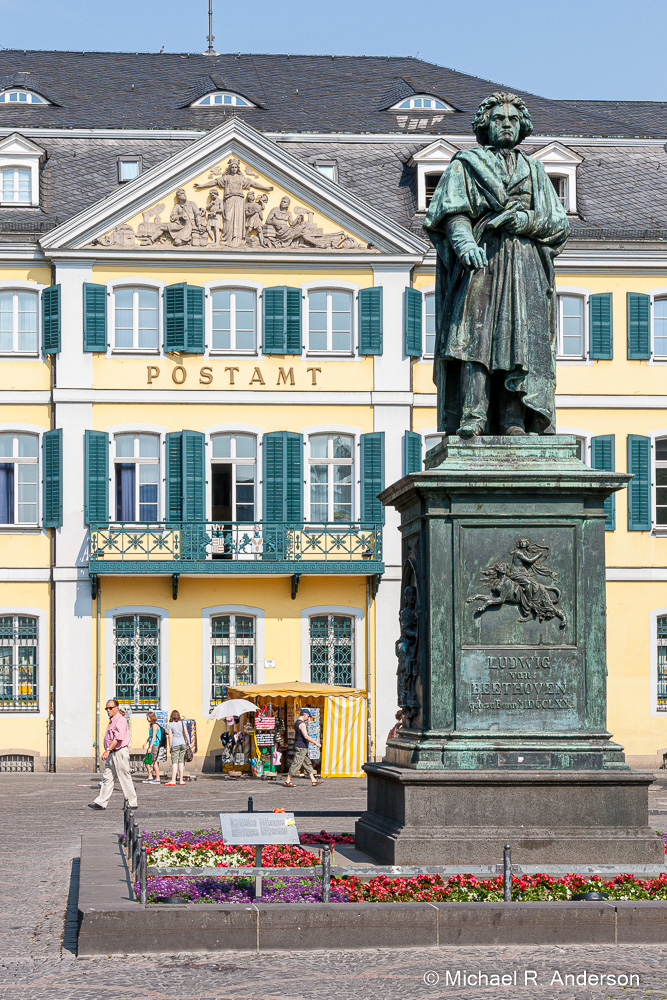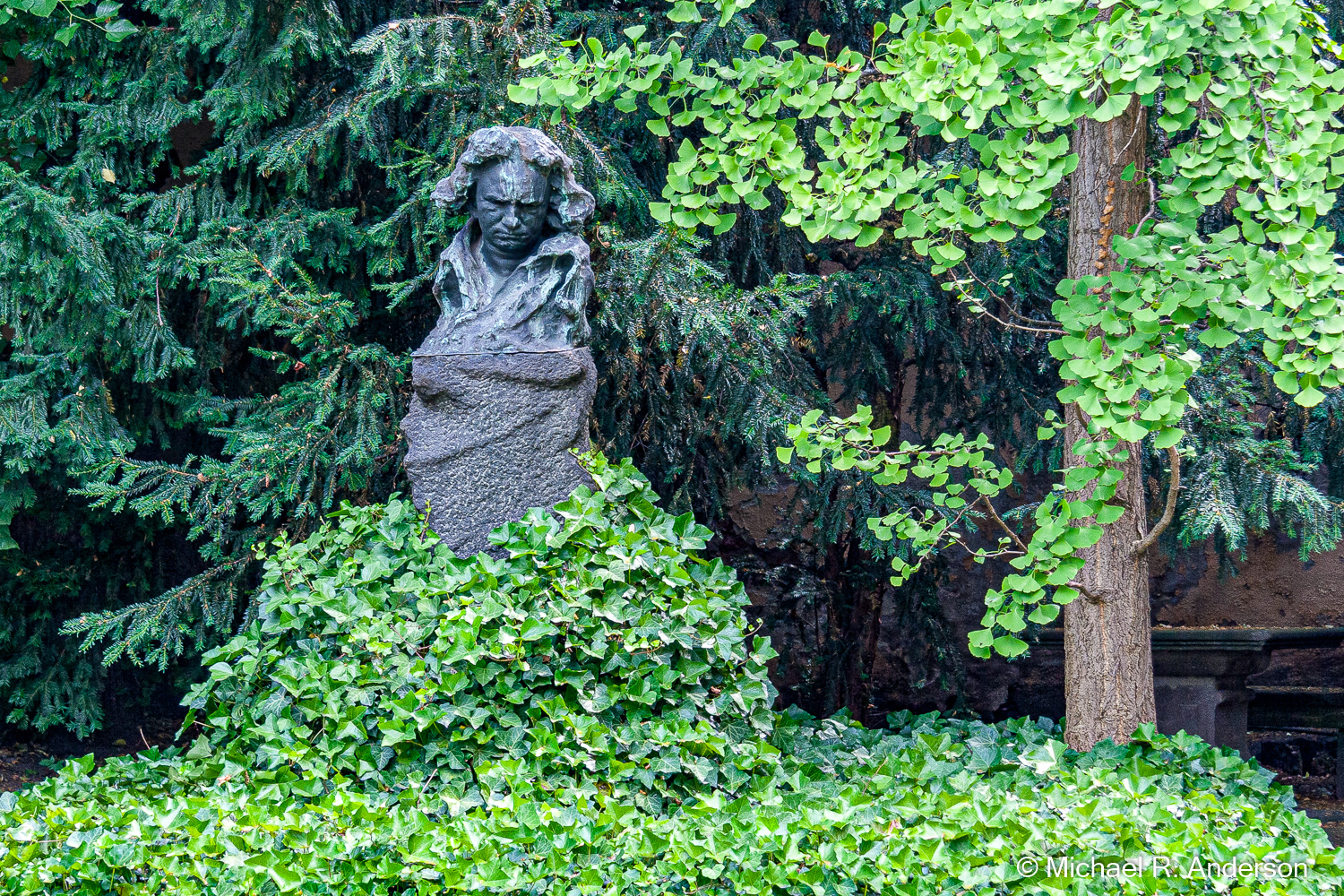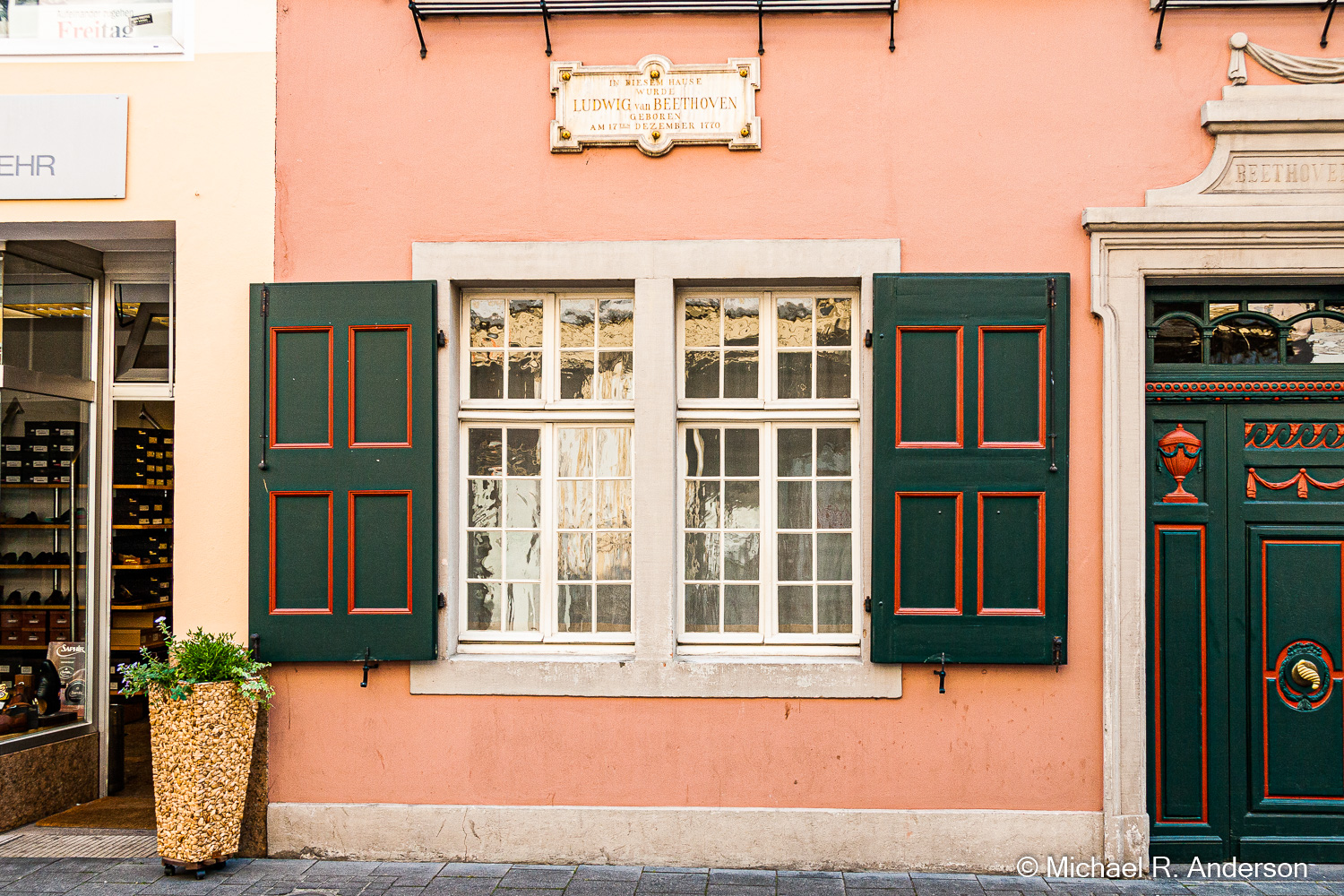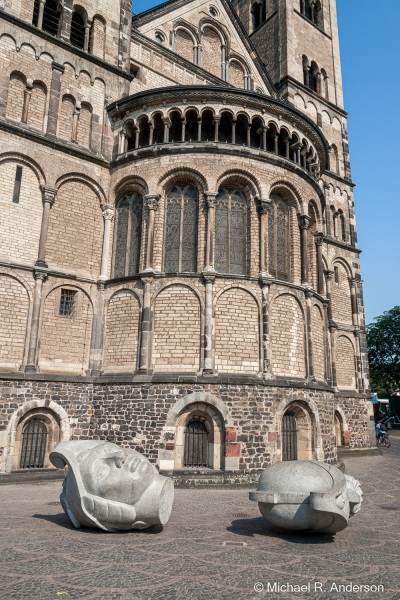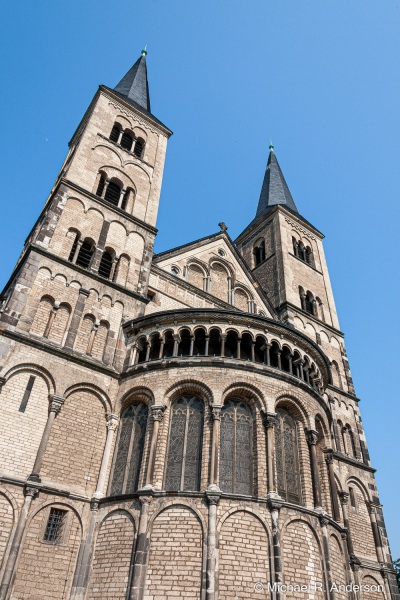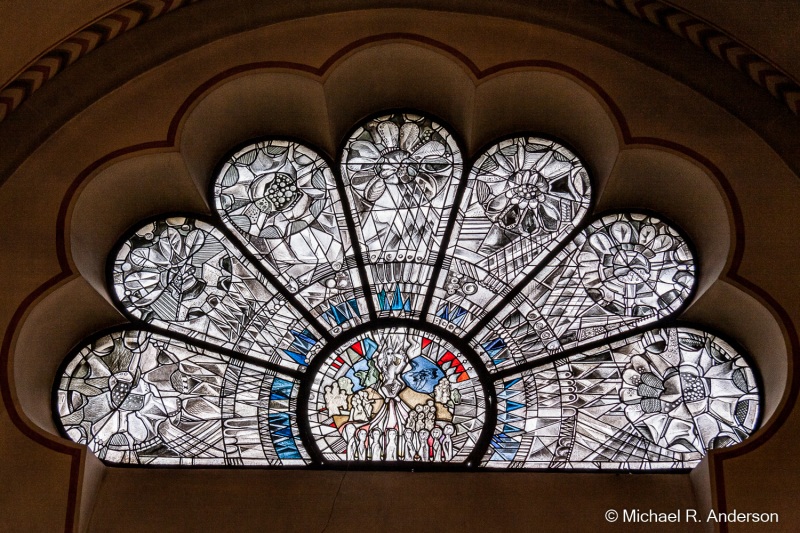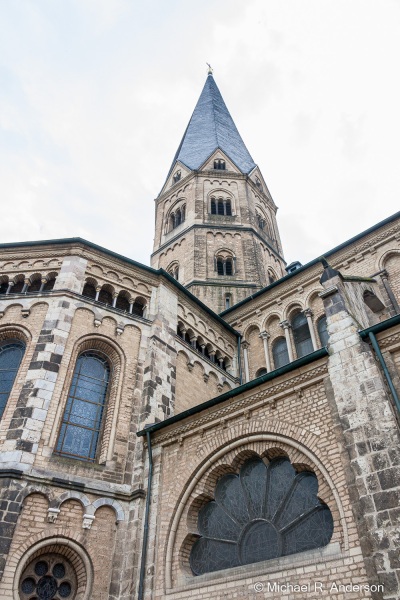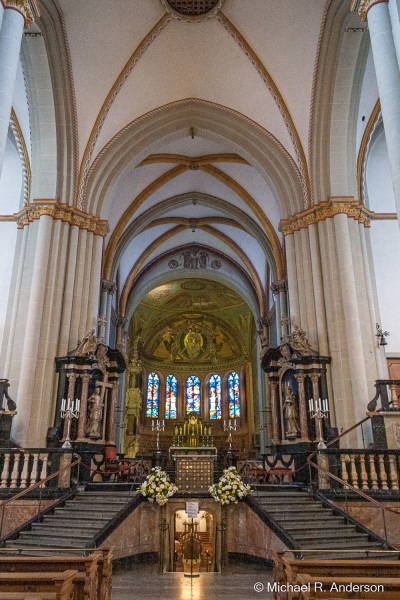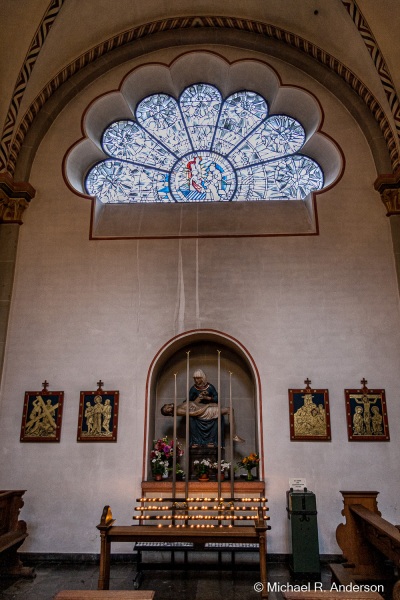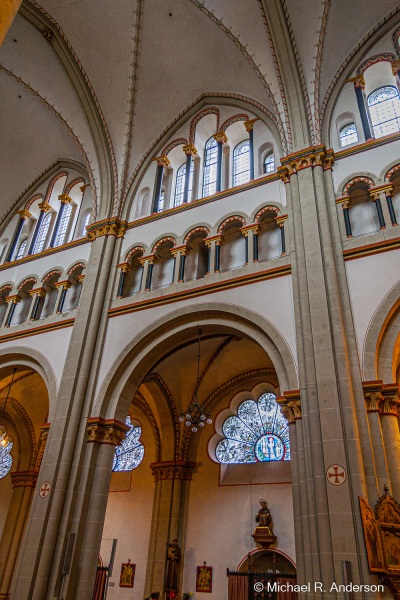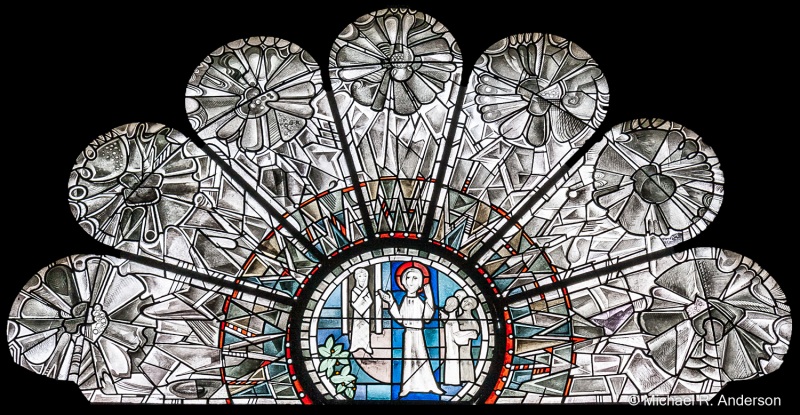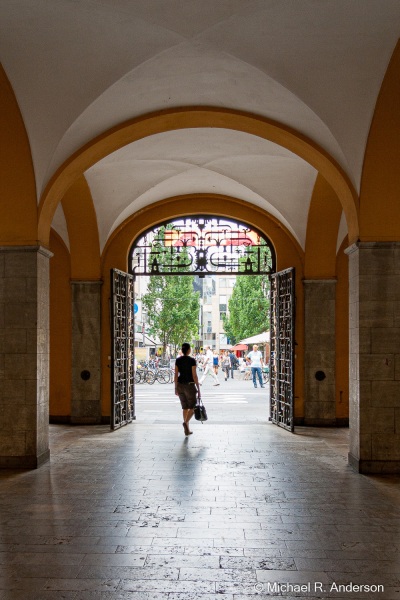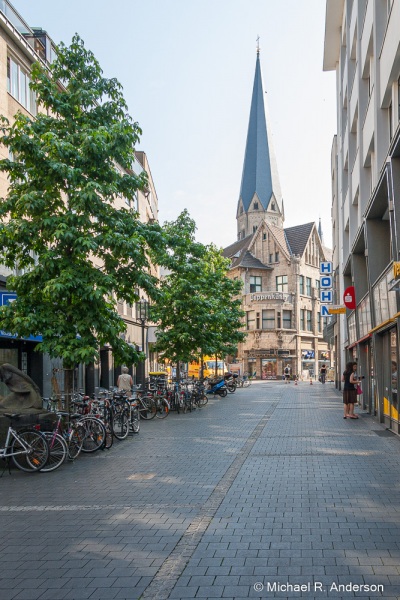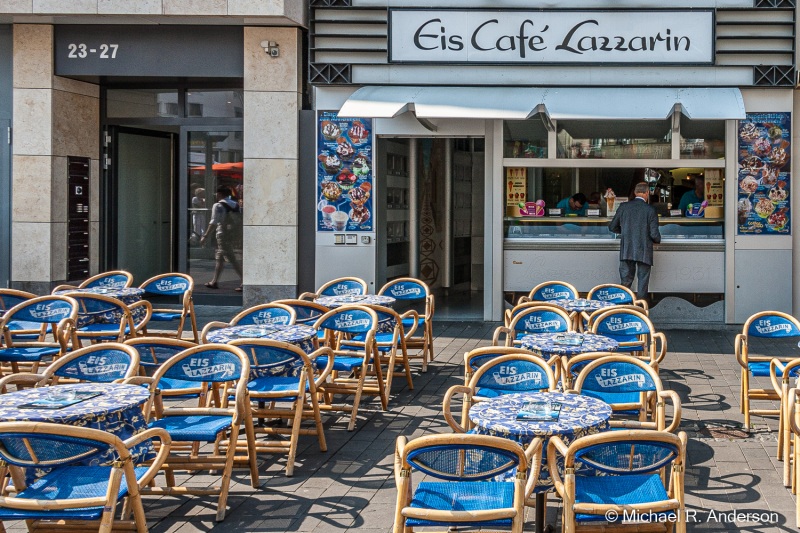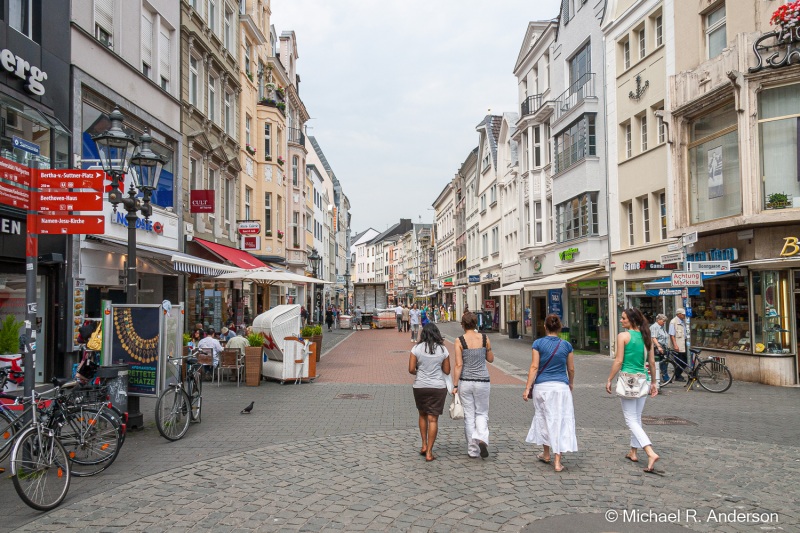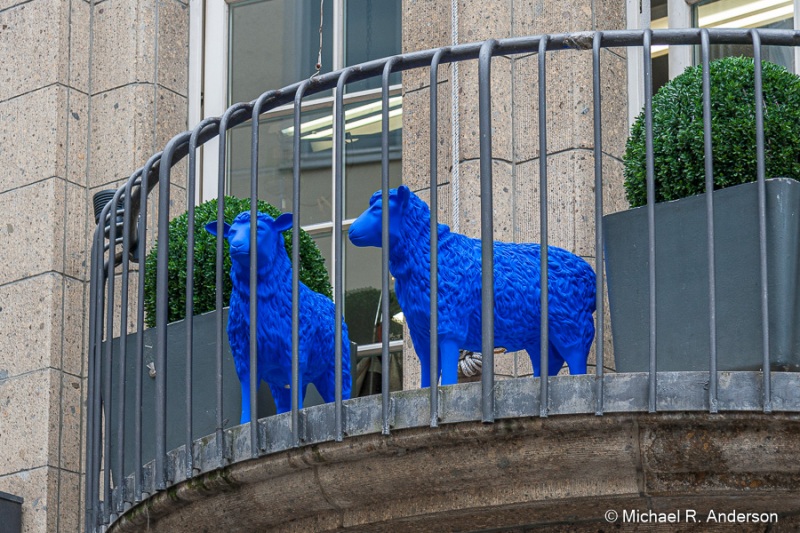Bonn, also on the Rhine River, is only about 15 miles south of Cologne. So, while in Cologne, we decided to make a day trip to Bonn. The train ride was very short and when we got off at the station, we immediately encountered a poster of Bonn’s favorite son — da da da daaaa! — Ludwig van Beethoven. I knew he played the piano, but I hadn’t realized that he also played the electric bass. You learn something new every day.
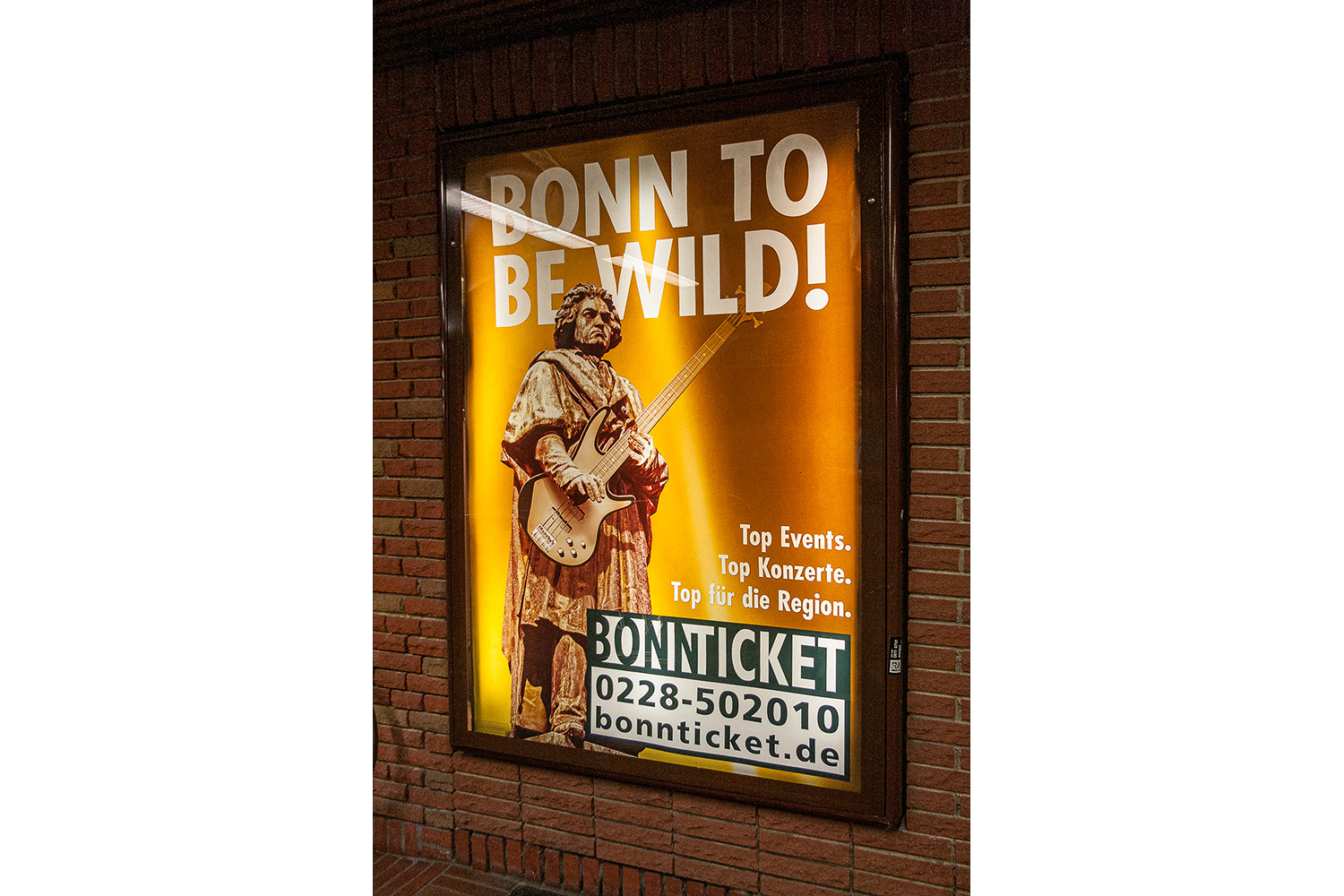
As you can imagine, being the birthplace of Beethoven, the city proudly reminds visitors of its heritage with statues in the town square, sculptures in the park, and a museum in the house where he was born.
With the division of Germany following World War II, Bonn became the provisional capital of West Germany and remained so from 1949 – 1990. Although the reunification of Germany in 1990 returned the capitol to Berlin, the German government maintains a presence in Bonn and the city is considered the second, unofficial, capital of the country.
Bonn is not a large city; with a population of about 300,000, it’s the 21st largest city in Germany. It is, however, one of the oldest cities; it was founded in the 1st century BC as a Roman settlement. In old European cities you can always find old European churches. In Bonn it’s the Bonn Minster, one of Germany’s oldest churches, built between the 11th and 13th centuries.
Lying in a small square behind the church are a pair of giant disembodied heads. They represent two Roman martyrs, Saints Cassius and Florentius, who were executed in the 3rd century AD because they refused to worship the pagan gods. They were proclaimed Bonn’s patron saints in 1643 and their remains, it is said, are located in a vault underneath the Minster.
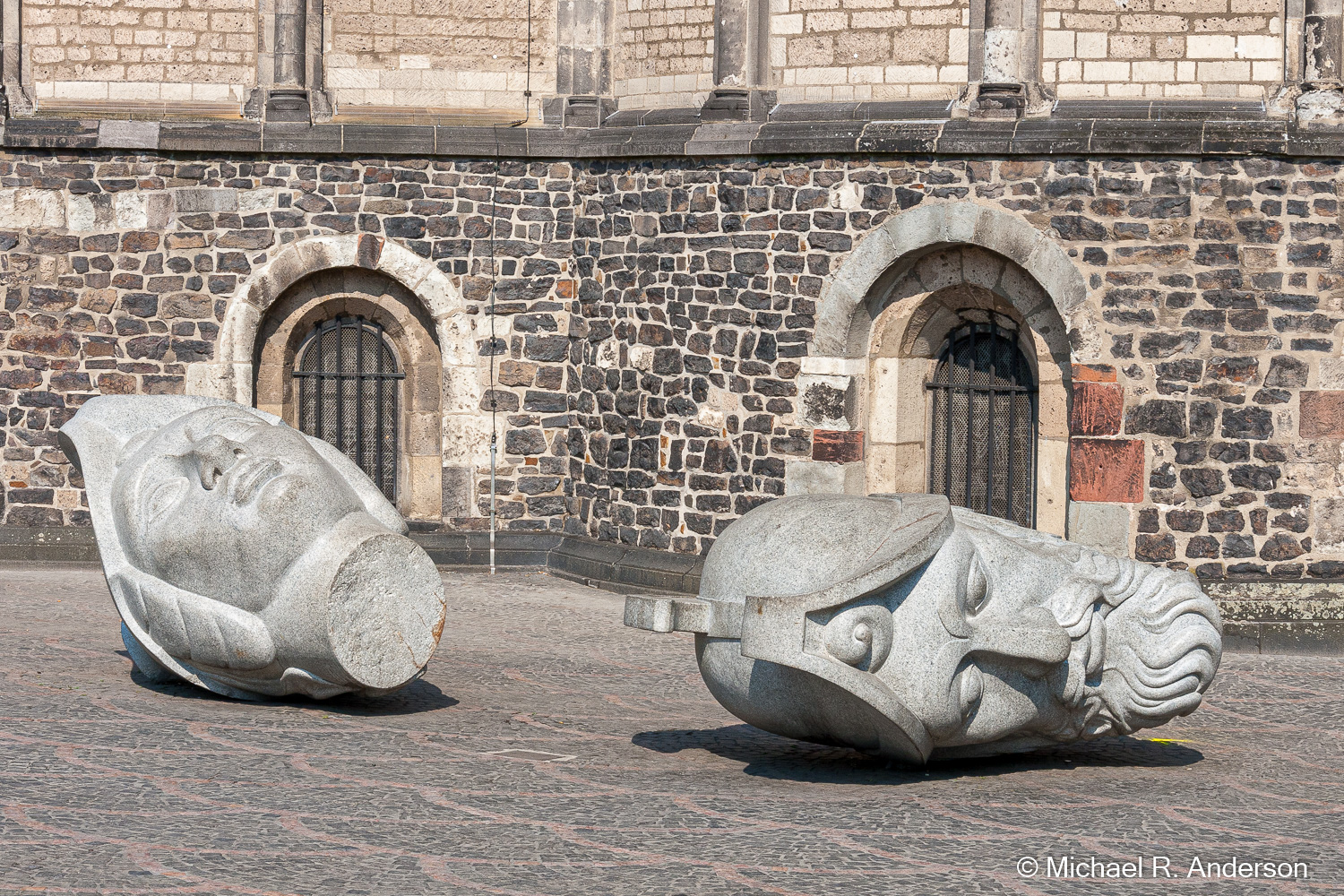
In addition to the disembodied heads in the square, the Bonn Minster has its own beauty and character. Though not in the same league as the Cologne Cathedral, the tall arched ceilings with the petal-like design of the stained glass windows in the transept add a unique touch.
Beethoven’s Birthplace and the Bonn Minster were nice places to see, but the main reason for visiting Bonn was that I had attended summer school there in 1966 studying German Language and Literature. I was 18-years old then and had just graduated from high school and registered for the draft. I’d grown up on a farm and had never been on an airplane. Having hardly ever been out of Wisconsin, I wanted to see the world, or at least a different part of it. Now I just wanted to show Kathy where I had been, see what’s changed in the intervening decades, and share some memories.
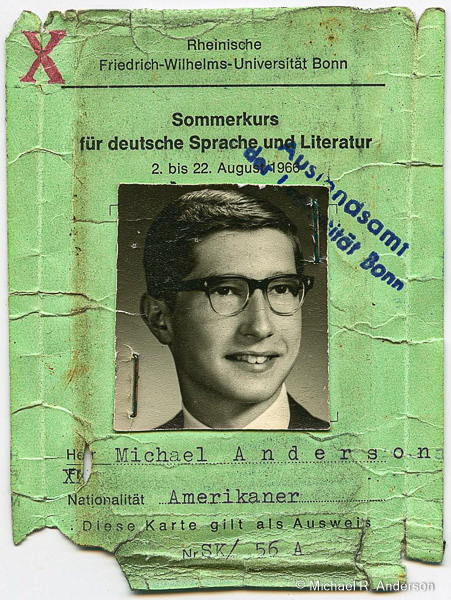
The school I attended, along with students from across the United States, was the Rheinische Friedrich-Wilhelms-Universität Bonn. It’s now called the University of Bonn, easier to say but not as sophisticated sounding. I found the dormitory that I stayed in, Newmanhaus, even though the street name had been changed from Koblenzerstrasse to Adenauerallee. When I left the dorm in the morning to walk to class, I always approached the University across the lawn to the immense golden building. It looked exactly as I remembered it, with the Bonn Minster in the background.
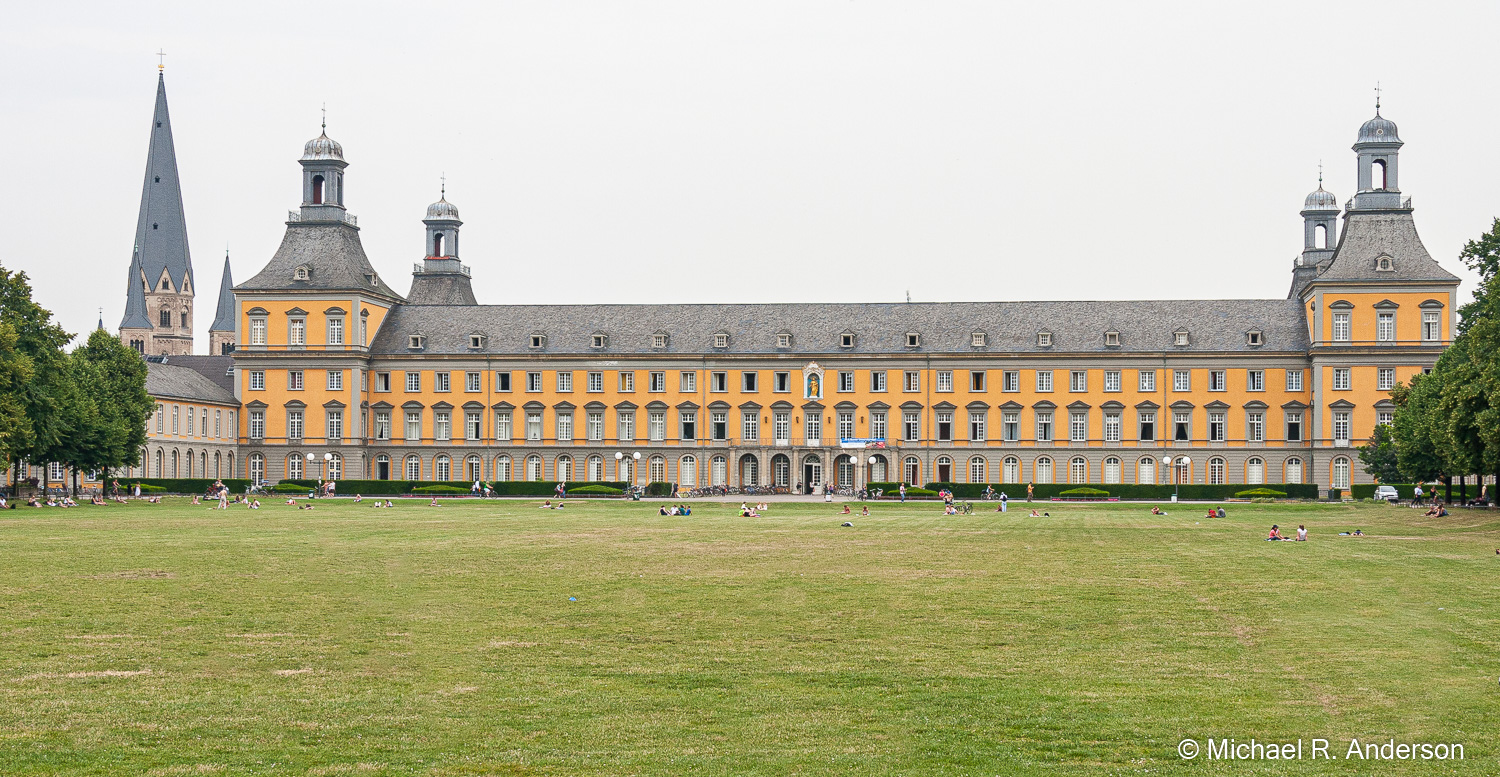
After a little more reminiscing about things that had taken place over 40 years before, we walked around town for a while. We stopped for pastries to stave off our hunger, saw a strange breed of blue sheep, and then headed back to the train station to return to Cologne.
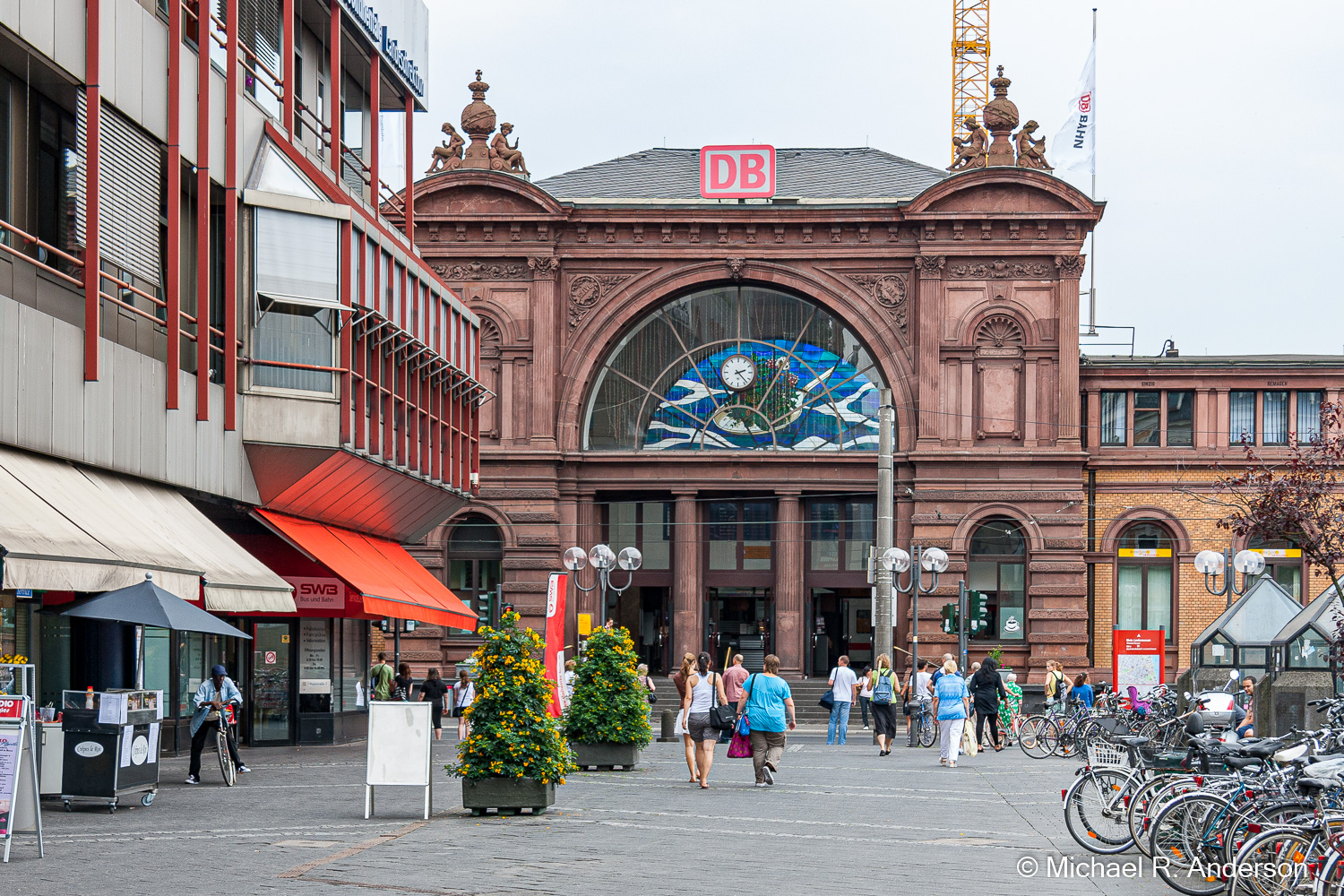
Ich erinnerte mich an viele Dinge aus dem Jahr 1966.
